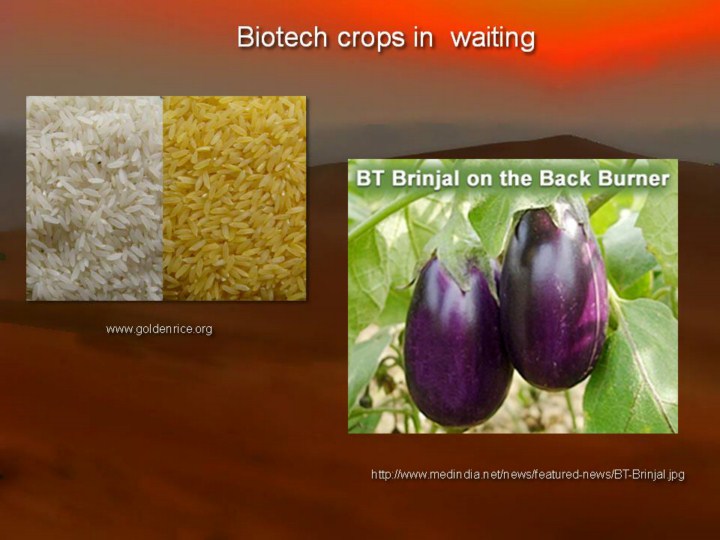| front |1 |2 |3 |4 |5 |6 |7 |8 |9 |10 |11 |12 |13 |14 |15 |16 |17 |18 |19 |20 |21 |22 |23 |24 | 25|26 |27 |28 |29 |30 |31 |32 |33 |34 |35 |36 |37 |38 |39 |40 |41 |42 |43 |44 |45 |46 |47 |48 |49 |50 |51 |52 |53 |review |
 |
Because after all these years – it’s been decades -- and given all the promise of molecular methods, we have virtually no GM crops other than cotton, corn, canola and soybeans. These are all either non-food crops or primarily animal feed crops and all of them were developed by big biotech companies because they’re the only ones that can afford the 10 or more million dollars it costs to bring just one new event, as they call it, to market. This is way out of proportion to the market value of specialty crops such as fruits and vegetables, and it’s way beyond the means of public sector researchers. Even the long-awaited Golden Rice is not yet available to farmers. Although Golden Rice has been ready to distribute for almost a decade, it continues to be held up by the complex, expensive and time-consuming testing required by the regulatory agencies of various countries. Fortunately, they’ve received some funding from the Gates Foundation to get this out of regulatory purgatory. Figuring out how to relax the regulatory stranglehold and achieve broader public acceptance of GMOs are very difficult problems, but they are social and political problems. The science is quite clear.
|